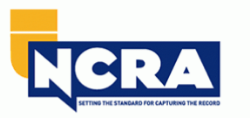Trial Presentation Skilled Support for Legal Teams and Court Cases
Trial Presentation Skilled Support for Legal Teams and Court Cases
Blog Article
Captivate the Jury: Crucial Components of a Powerful Test Presentation
Necessary elements such as recognizing the target market, crafting a compelling story, and understanding verbal and non-verbal interaction are essential parts of an effective presentation. As these variables intertwine, they develop a natural technique that not just informs however additionally engages jurors on several degrees.

Understanding Your Target Market
Recognizing your audience is an essential facet of effective trial discussion. A successful presentation depends upon the ability to realize the demographics, values, and tendencies of jurors. This understanding notifies exactly how debates are framed, evidence is offered, and sob stories are crafted, making certain that the message resonates with the jurors on an individual degree.
Research study suggests that jurors come from diverse histories and might have differing degrees of comprehending regarding lawful proceedings (trial presentation). Thus, it is essential to avoid legal jargon that can estrange or perplex them. Rather, utilizing clear, relatable language promotes engagement and comprehension. In addition, recognizing the jurors' possible predispositions and life experiences enables the trial speaker to prepare for arguments and address problems proactively.
Efficient test presentation additionally includes observing jurors' responses during the process. Engaging with jurors as individuals instead than a collective device is important in cultivating a strong link in the courtroom.

Crafting a Compelling Story
Crafting an engaging narrative is essential in leading jurors with the complexities of an instance. A well-structured story not only simplifies intricate lawful concepts yet likewise involves jurors on a psychological level, making the information more relatable and remarkable.
To achieve this, lawyers must start by determining the core message they want to convey. This message ought to resonate with the jurors' worths and experiences, fostering a link that transcends plain truths. The narrative must unravel rationally, presenting events in a clear series to avoid confusion. This sequential approach can assist jurors adhere to the progression of occasions, stressing cause and impact.
Integrating human components-- such as personal stories or narratives-- can better enhance the narrative's influence. These components evoke empathy, enabling jurors to envision the consequences of the situation on the real worlds. Additionally, utilizing a constant theme throughout the discussion enhances the main disagreement, making it less complicated for jurors to keep essential points.
Eventually, an engaging story changes a trial presentation from a simple address of realities into a convincing tale that captivates the jury, motivating them to ponder with both factor and feeling.
Using Visual Help
Incorporating visual help into a trial presentation can significantly enhance jurors' understanding and retention of info. Visual materials such as graphes, representations, photos, and videos can change complicated legal concepts and proof More Help right into quickly digestible layouts. By involving numerous detects, these aids allow jurors to envision the instance's crucial elements, making it simpler for them to follow along and grasp intricate information.
In addition, properly designed aesthetic help can highlight vital points and highlight partnerships in between various items of evidence. Timelines can successfully illustrate the sequence of occasions, while annotated images can clarify particular details appropriate to the case. This use this link not only help in understanding but additionally reinforces the story offered by the attorney.
It is essential, nevertheless, to ensure that visual help are relevant, clear, and skillfully presented. Excessively intricate or cluttered visuals might bewilder jurors and interfere with the message. When used judiciously, visual help offer to match the dental arguments and boost the general influence of the trial discussion. Inevitably, effective aesthetic communication can be a powerful device in persuading jurors and assisting them get to informed final thoughts.
Mastering Verbal Interaction
Effective verbal communication is important in a trial presentation, as it serves as the main ways with which lawyers convey their disagreements and attach with jurors. Simplicity in language promotes understanding and helps jurors realize complicated problems presented during the trial.
Moreover, tone and pacing significantly impact how messages are received. A read confident tone conveys authority, while appropriate pacing allows jurors to absorb information without feeling bewildered. Attorneys ought to additionally differ their vocal inflections to highlight bottom lines and maintain jurors' interest throughout the presentation.
Additionally, the organization of spoken debates is crucial. Structuring the narrative practically and coherently assists jurors follow the lawyer's line of reasoning, making it less complicated for them to maintain crucial details. Utilizing influential methods, such as storytelling, can likewise boost the emotional vibration of the disagreements offered, thus developing a much more extensive link with jurors.
Ultimately, understanding verbal interaction not only enhances an attorney's situation yet likewise cultivates count on and relationship with the jury, dramatically enhancing the possibilities of a favorable decision.

Involving With Body Language
Nonverbal interaction plays an essential function in test presentations, often sharing messages that words alone can not reveal. Body movement, including motions, pose, faces, and eye call, substantially influences just how jurors perceive the credibility and genuineness of the presenter. A certain position, with shoulders back and an open posture, can infuse count on, while closed-off body movement may recommend defensiveness or uncertainty.

Face expressions ought to mirror the emotions connected with the case, enhancing the narrative existing. As an example, an honest expression during a touching minute can generate compassion and strengthen the sob story. Eventually, understanding body language is necessary for effective trial discussions, as it enhances verbal communication and establishes a compelling presence that reverberates with the court.
Verdict
Finally, astounding the court demands a tactical strategy that includes recognizing the target market, crafting a compelling narrative, using aesthetic help, understanding verbal communication, and engaging with body movement. Each component plays an essential function in producing an effective test discussion that reverberates with jurors on both psychological and intellectual degrees (trial presentation). By integrating these components efficiently, legal experts can substantially boost their capacity to persuade and influence jury decision-making
Report this page